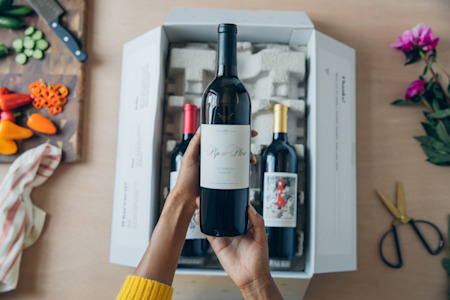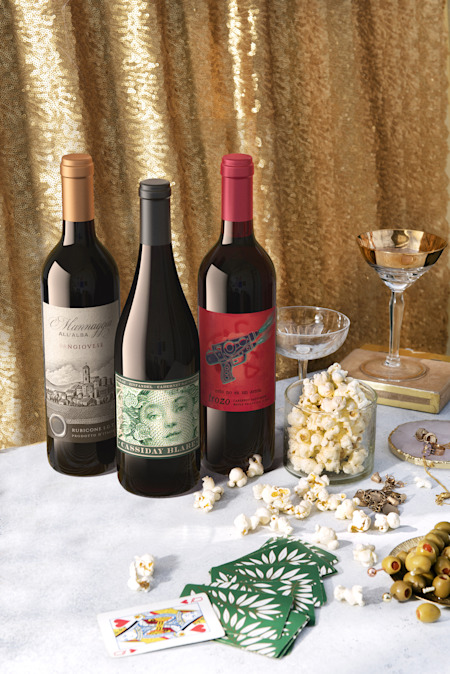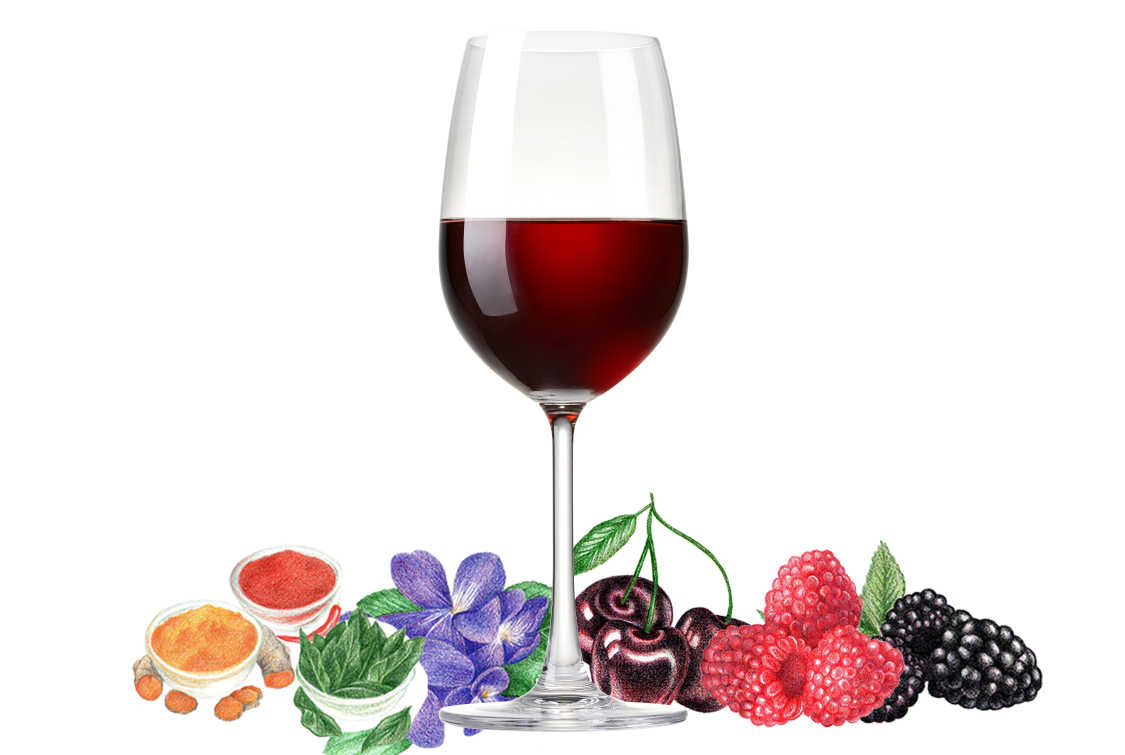Ultimate Guide to Barbera Wine
Barbera wine is a light-bodied grape variety that's capable of showing fine expressions of Italian terroir
While the attention is often all on Nebbiolo when it comes to northern Italy's Piedmont region (Piemonte in Italian)—because of Barolo, Barbaresco and the like—Barbera wine should not be overlooked. Generally speaking, it's more of an everyday red wine than those high-end bottlings, but one that can provide much enjoyment. The overwhelming majority of Barbera plantings are found in this northern Italian wine region, but some pockets of the New World also grow it, such as California, Argentina and Australia.
You likely know Barbera, if you know it at all, by the full names of its most common appellations: Barbera d'Alba, Barbera d'Asti and Barbera del Monferrato. The Barbera grape can be made into a variety of wine styles, from light-bodied and easy-drinking to versions with a little more tannins and heft. In the hands of serious winemakers, the grape variety is capable of showing fine expressions of Italian terroir.

Sign up for the Club Today
Join Firstleaf to taste delicious wines from all over the world and learn more about these grapes. The club has featured amazing examples, take the quiz to get the pairings for your individual palate.
Take Our QuizIN THIS ARTICLE:
Want personalized wines?
Get your first box of wines for $44.95 + free shipping.

History of Barbera Wine
There's not a lot of documentation pointing to Barbera's exact origins, but it's widely considered to be native to Italy, and most likely Piedmont. There are records of it growing in the Monferrato area as far back as the 13th century, however, it doesn't seem to be genetically related to any of the other common Piedmontese varieties. The Barbera grape was also included in an official list of regional grapes in the late 1700s.
Barbera vines are very productive and are quite abundant today, even though its acreage more than halved between the 1990s and 2010s. It's still the third most-planted variety in Italy, after Sangiovese and Montepulciano. In the 1980s and 1990s, inspired by the innovation happening in Tuscany with so-called "super Tuscans," winemakers started experimenting by aging Barbera in new oak barrels. That legacy remains today, although a few different styles exist.
Fun Fact
Giacomo Bologna of Braida was the first to release a Barbera on the international market. He was also a pioneer behind the winemaking experiments that led to more new oak influence in Barberas. He achieved both of these goals with the estate's signature cuvée, Bricco dell'Uccellone.
What does Barbera Wine taste like?
Wines made from Barbera are much deeper in color than those made from the Nebbiolo grape. In fact, back in the day, Barbera was used in Barolo and Barbaresco to darken the color of the wines. Nevertheless, this red grape is actually light- to medium-bodied and has relatively low tannins, although some Barberas are aged in oak and can be much more structured in their flavor. Barbera is low to moderate in alcohol, but has naturally high acidity, meaning vintners need to keep a close watch in the vineyard.
The typical wine flavors of Barbera are blackberry, black cherry and raspberry. Leaner versions tend toward more red fruit, while riper ones will exhibit more black fruit. Barbera can also have floral aromas, like violets, as well as plenty of spice, such as black pepper, anise and cinnamon. Overall, these wines are generally quite juicy and easy-drinking, however, some more structured and ageworthy bottlings exist as well.
Barbera Characteristics
In the vineyard, Barbera is a very vigorous and productive vine. Winemakers have to monitor growth and control yields in order to get good quality grapes, especially in light of Barbera's very high acidity, which can become abrasive if there's overproduction. On the flip side, the grape's high acidity is a good fit for hot climates, as the wines are able to keep their freshness despite warm temperatures.
Barbera is a somewhat late-ripening variety—it's typically ready to be picked about two weeks after Dolcetto, another red Piedmont grape, but still before Nebbiolo. Its easy going nature also allows it to thrive in a range of soils, such as clay, sand and limestone.
Fun Fact
A common joke among winemakers in Piedmont is that Barbera is the wine you drink while you wait for Nebbiolo to be ready.
Barbera Wine Nutritional Facts
The nutritional value of Barbera varies depending on two factors: alcohol and sugar. As mentioned previously, Barbera's alcohol levels are on the lower side. This is dictated by how much sugar is in the grape when it's picked: less sugar means less alcohol. Thus, Barbera likely has fewer calories than other grapes with higher alcohol and sugar content. The more sugar there is in a wine, the more carbohydrates will be present.

Shop Award-Winning Wines
Looking to try a new type of wine or reorder an old favorite? Shop wines by color, varietal, region, and more in our wine store.
Shop Wines NowHow to Serve and Store Barbera Wine
Most Barbera is meant to be drunk in its youth, within a couple years of release, when its fruit flavors and acidity are fresh and juicy. There are exceptions, of course. Some higher-end bottlings, typically those aged in new oak barrels, can continue to evolve for longer, between five and 10 years. As with all wines you are cellaring, make sure to keep the bottle lying on its side so the cork doesn't dry out, and keep it in a cool (but not too cold) room with little natural light.
Serving temperatures largely depend on personal preference, but it's best to go by a few basic guidelines. The recommended temperature for red wines is between 60 and 70 degrees Fahrenheit. If you don't want to fuss too much about numbers, just let the wine come to room temperature. Some people like their reds on the cooler side, which is fine, as long as the wine doesn't get too cold, or its tannins will be harsh and its fruit muted.
What to Pair with Barbera Wine
Like all Italian wine, Barbera wines pair excellently with Italian food. This food pairing is especially true of pizza as well as pastas with tomato-based sauces. Pizza with pepperoni, soppressata or other types of sausage can be a good match for Barberas that have a little more body and spice to them; same goes with meat pastas like spaghetti with meatballs or Bolognese.
Generally speaking, steer clear of poultry—except duck—but pork, lamb and beef can make a great food pairing as well. If you want to eat something vegetarian with Barbera, try sticking with root vegetables as opposed to anything green or too delicate. Mushrooms are a great bet, and even truffles, which can coax out some earthy notes in the glass.
Barbera Wine Regions Around the World
Italy:
Piedmont, the birthplace of Barbera, is still the grape's epicenter today. The Barbera d'Asti appellation is considered to be the grape's most prestigious. It was elevated to Denominazione di Origine Controllata e Garantita (DOCG) in 2010, and one of its subzones, Nizza, followed with DOCG status in 2014. Tinella and Colli Astiani are two other important subzones within Barbera d'Asti.
The Barbera d'Alba DOC is also a noteworthy source for good Barbera. The appellation is mostly made up of vineyards planted to Barbera because Nebbiolo wouldn't have grown well. However, this doesn't mean there isn't quality here. Then there's Monferrato, which has traditionally been known for light-bodied and sometimes sparkling Barbera del Monferrato, but quality is also on the rise. A separate "superiore" appellation exists for each of these that is considered a step up in quality, with stricter regulations in terms of yields and alcohol: Barbera d'Asti Superiore, Barbera d'Alba Superiore and Barbera del Monferrato Superiore.
Piedmont producers of note for great Barbera include Michele Chiarlo, Braida, Coppo and Marchesi di Barolo.
Elsewhere in Italy, Barbera is also grown in Emilia-Romagna, Lombardy, Puglia and Sicily. More and more, it's made as a varietal wine, but much of it is also blended with grapes like Bonarda or Croatina.
Fun Fact
The Italian wine regions of Campania and Sardinia grow Barbera del Sannio and Barbera Sarda, respectively. However, confusingly, these grapes are not related to the Barbera from Piedmont.
California:
California is where most Barbera in the United States is located, notably in the Sierra Foothills and Central Valley. As discussed earlier, the grape's naturally high acidity translates well in these New World climates.
Australia:
Australia is also an important new frontier for Barbera. It's mostly found in South Australia's McLaren Vale and Adelaide Hills, as well as the state of Victoria.
Argentina:
In Argentina, Barbera is mostly used as a blending grape.
IN THIS ARTICLE
Want personalized wines?
Get your first box of wines for $44.95 + free shipping.


WinePrint™ by Firstleaf
Are you looking to learn more about your wine preferences? Check out our Wine Print for an in-depth look at your personal tasting profile. Discover your favorite wines, varietals, regions, and tasting notes and get personalized recommendations wherever you are.
Learn More
